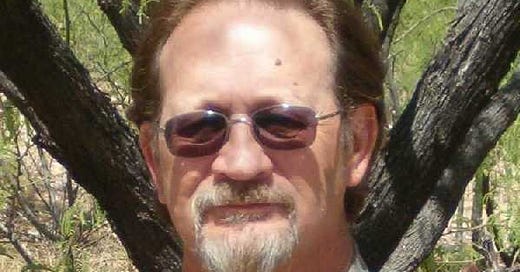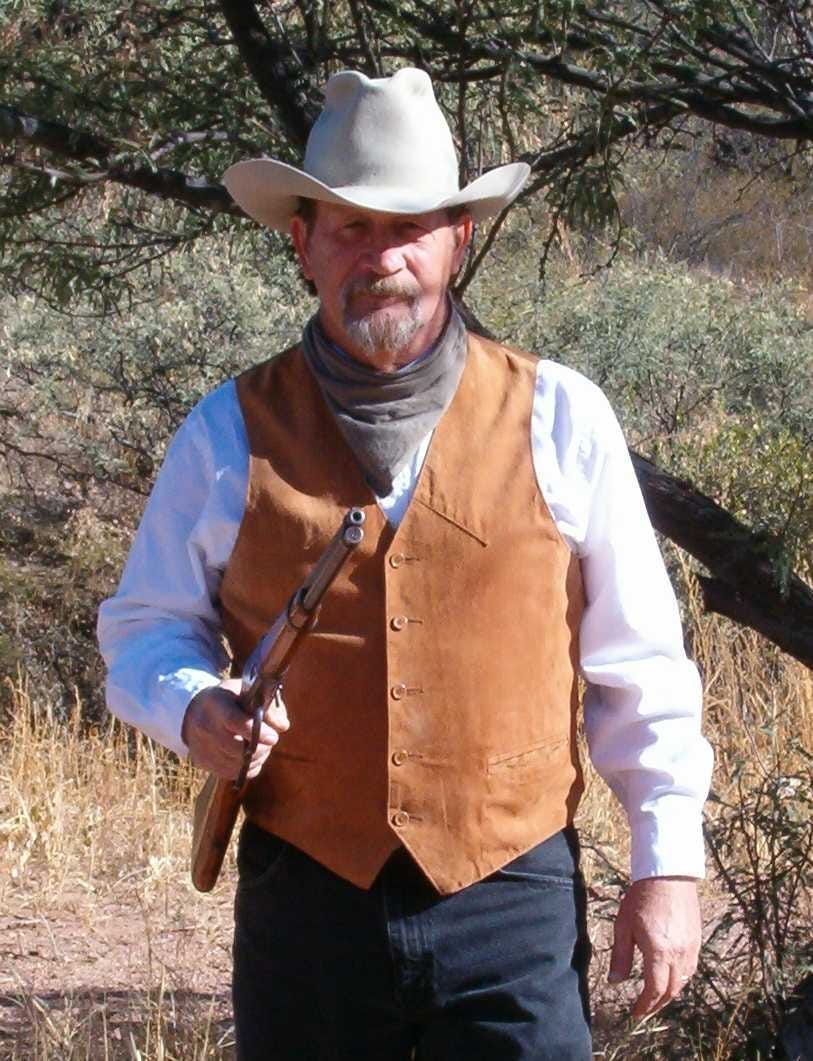INK & GRIT: Harvey Stanbrough
A Contemporary Example of The Pulp Work Ethic
Editor’s Note:
You can catch up on the INK & GRIT: Masters of Pulp Fiction series below:
Today’s INK & GRIT segment features a guest post from novelist
, the living and breathing example of The Pulp Work Ethic.In addition to authoring and publishing numerous novels, Harvey also dedicates time to sharing his expertise in fiction writing and offering related insights on his Substack
.Harvey Stanbrough is a retired Marine and a prolific professional writer in Southeast Arizona. He adheres to Heinlein's Rules and writes into the dark. For a time, he wrote under a few personas and several pseudonyms, but he takes a pill for that now and writes only under his own name.
To see Harvey's fiction and nonfiction, please visit his discount store at https://payhip.com/StoneThreadPublishing. You might especially enjoy his Writing Better Fiction.
Hey there. I'm Harvey Stanbrough.
Unless you enjoy reading westerns, science fiction, mystery, action-adventure, thriller, or magic realism short stories and novels, you probably have never heard of me.
When Frank asked me to write a guest post for the "Ink & Grit" series on Pulp, Pipe, and Poetry, I was honored. As a prolific professional fiction writer, I'm also a fan, especially of the "Ink & Grit" series, and a subscriber of P3.
First, my creds. When I say I'm "prolific," I mean I've written 108 novels, 10 novellas, and just under 280 short stories in eight years.
How?
Although I don't see myself as a pulp writer—I'm just a writer—I have a pulp writer's work ethic. Writing is what I do.
A lawyer calls himself a lawyer because he puts on a suit five days a week, goes into an office, and practices law. A cop puts on a uniform and polices his segment of society five days a week.
Tradespeople (carpenter, electrician, plumber, automobile mechanic, HVAC etc.) get dressed and build, clear, inspect, and repair or modify things five days a week.
I'm a writer, so each morning, I pour a mug of coffee, trudge out to my office, and write.
On a typical day, I write and post something for The New Daily Journal (TNDJ), an instructive blog for fiction writers. Then I turn to my fiction.
My personal goal is to write 3250 words of publishable fiction per day. The words might go into a short story or, if I have a longer work in progress, a novella or novel. It doesn't matter to me where the words go. It only matters to me that I write them.
I take a short break about once an hour and typically respond to emails or comments through the day also.
I am an adherent of Heinlein's Rules (you can download a free annotated copy by clicking here) and a non-technique called Writing Into the Dark, a term coined (as far as I know) by Dean Wesley Smith.
At its most basic, writing into the dark means writing without knowing in advance where the story's going.
In a little more depth, it means I'm aware the story I'm writing isn't "my" story but the characters' story. After all, they're the ones who are living it.
Instead of donning a white robe and ascending into an ivory tower from which I can look down on the story and control every aspect, I slip into sneakers, jeans, and a t-shirt, roll off the parapet into the trenches, and run through the story with the characters, trying to keep up.
I am their Recorder. As we race through the story together, I note and write down whatever happens. I also record what the characters say (and how they say it) and do in reaction to those events.
I do that for about an hour (900 to 1200 words) and then I take a short break.
When I come back from the break, before I begin the next writing session, I take five or ten minutes to read (for pleasure) what I wrote during the previous session. As I read, I allow my fingers to rest on the keyboard.
My characters use my fingers to 'correct' any errors that pop out at us, and to add anything I might have missed as we ran through the scene.
Because I do all of that while in the creative subconscious, I call it "cycling." In other words, I cycle back over each writing session. When I get back to the white space again, I'm back in the story and I start typing the next session.
That's it. Turning out a short story of up to 5,000 or 6,000 words in a day or two, or turning out a 35,000 or 40,000 word novel in ten to fourteen days is just that easy.
As I write this on February 21, 2025, I've written 4 novels and 8 short stories this year, and that includes a week of no writing at all. I'm starting my 109th novel today.
Lest you think I write "fast," I don't. I write only about 1000 words per hour (about 17 words per minute). That leaves a lot of time for staring off into space.
But with my writing/cycling routine, when I've reached the end, the story or novel is finished and ready (after I run a quick spell check) for submission or publication.
If you couldn't tell, I strongly recommend Writing into the Dark.
The only difficult parts about WITD are learning to trust yourself—after all, you've been telling stories since before you even knew there was an alphabet—and learning to let go of all the nonsensical, fear-based myths we've all heard about writing over the years: That you must
outline
revise
seek critical input
rewrite, and
polish (yawn, whatever that is).
That you "must" do anything of the sort is impure, thoroughly adulterated bull cookies. Originally, all of that nonsense came from critics and other people who don't write fiction. Asking them for advice on writing fiction is like asking a fish to teach you how to tread water. Same medium, but a very different process.
If you can trust yourself and shove away your conscious, critical, always negative mind, you too can be a prolific professional fiction writer.
Come on in. You're welcome here. The water's warm and calm and great for swimming against the robotic flow.
Harvey Stanbrough is a retired Marine and a prolific professional writer in Southeast Arizona. He adheres to Heinlein's Rules and writes into the dark. For a time, he wrote under a few personas and several pseudonyms, but he takes a pill for that now and writes only under his own name.
To see Harvey's fiction and nonfiction, please visit his discount store at https://payhip.com/StoneThreadPublishing. You might especially enjoy his Writing Better Fiction.








Haha from directly from your website. Great pictures. Thanks again for the guest post
Hey Franks,
Thanks! I don't know where you came up with those pics, but thanks for that too. It was great to revisit that younger guy. :-)